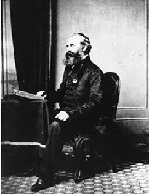From the January/February 2016 issue of HealthCare Business News magazine
When 34-year-old Dr. Thomas Hodgkin was ready to share his findings on a type of cancer that starts in white blood cells, he couldn’t do it himself. Because he was not a member of London’s Medical and Surgical Society, the organization’s secretary had to read his paper for him. The members who were present at that Jan. 10, 1832, meeting were the first to hear about what today is known as Hodgkin’s disease.
Hodgkin was born in Pentonville, England on Aug. 17, 1798, into a devout Quaker family. He was drawn to the sciences at an early age and spent some time serving as an apprentice to an apothecary. At 21, he enrolled in medical school in Edinburgh, Scotland, and visited many medical facilities in Europe. On one of his trips, Hodgkin got to learn how to use the stethoscope from its inventor, René Laennec. He also met and became close friends with Sir Moses Montefiore, a wealthy Jewish philanthropist.
In 1827, Hodgkin was named Inspector of the Dead and Professor of Morbid Anatomy at Guy’s Hospital Medical School. He educated many students on how to properly identify the cause of death. He also served as the Curator of the Pathological Museum, where he assembled a pathologic specimen catalog described in his obituary as “a masterpiece of talent and industry.”
While at Guy’s Hospital, Hodgkin performed hundreds of autopsies and developed a reputation as a brilliant pathologist. In his 1832 pioneering paper, he described the postmortem findings of seven patients who had enlarged lymph nodes and spleens. He pointed out that the disease first appeared in the lymph nodes and then spread to the spleen at a later stage. However, the paper was largely ignored by the medical community.
In 1836, The Royal College of Physicians changed its longstanding rule to accept clinicians who were educated at schools other than Oxford or Cambridge (attendance at these schools signified that the physicians were members of the established church). The College offered Hodgkin membership but he declined, refusing to forget its recent and unjust practice. This decision may have cost him a clinical appointment at Guy’s Hospital in 1837. After 12 years of service, he resigned from the facility.
Hodgkin didn’t escape disappointment in his personal life either. He was deeply in love with Sarah Godlee, his first cousin. However, he couldn’t marry her because a Quaker law forbade first cousins from getting married. He unsuccessfully petitioned the Society of Friends to make an exception to the rule on several occasions. The rule was repealed later, but it was too late. In 1849, Hodgkin married a non-Quaker woman.
In addition to being a brilliant pathologist, Hodgkin was also a human and civil rights activist. He was fiercely anti-slavery and spoke out against the exploitation of American Indians by the Hudson’s Bay Company. Once Hodgkin left Guy’s Hospital, he accompanied Montefiore on multiple trips abroad to advocate for the Jewish people and other oppressed groups. During an 1863 visit to Morocco, Hodgkin was able to convince the Sultan of Morocco to grant greater freedoms to the Jewish people in his country. In 1865, a British doctor named Samuel Wilks described the same cancer as Hodgkin did decades earlier. When Wilks came across the paper Hodgkin had written, he gave credit where it was due and named the disease after the clinician who discovered it.
Just a year later, Hodgkin joined Montefiore on a trip to Palestine, which would be his final destination. During his visit, he contracted a dysenteric-like condition and died on April 4. The inscription on his gravestone in Jaffa reads, “Nothing of humanity was foreign to him.”
